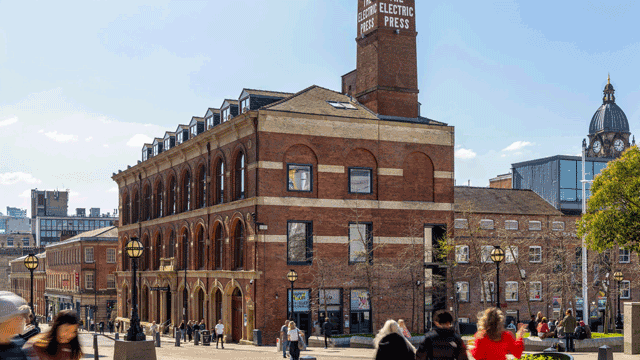COMMENT At our commercial property auctions, we’re beginning to see a renewed level of interest from businesses wanting to take the opportunity to buy the property that they occupy. This is an important signal for the real estate market. Owner-occupiers are most likely to buy their properties in the recovery phase of an economic cycle, when they have more confidence about their own business. Also, the fact that the property cycle is also in its own early stage of a recovery means it can still offer attractive pricing.
Key factors
Overall, the factors which lead businesses to buy their operational base usually encompass the following:
- Lower prices and less competition: When the property market is still in recovery prices are typically at their lowest and there is less competition from investors and other buyers.
- Favourable negotiation conditions: Sellers may be more willing to negotiate on price and there is often a higher supply of available properties, allowing owner-occupiers to secure better deals.
- Potential upside: Owner-occupiers purchasing at this stage may benefit from future capital appreciation as the market progresses more positively.
Of course, making this move, while releasing a business from its rental obligations and exposure to future uplifts in this cost, can also tie-up capital that could otherwise be put to use operationally. For this reason, most owner-occupiers will look to leverage competitive lending rates in order to complete a purchase. Although this entails creating a financial outgoing in the form of interest payments, the business will take comfort from the control that ownership brings and the fact there is an underlying value to the property which contributes to the business’s balance sheet.
Take a SIPP
Buying during a soft market carries the potential for longer-term value creation. As the property cycle transitions from recovery into expansion, capital values increase. For owner-occupiers who purchase during the low point of a cycle, this can translate into strong capital appreciation. In effect, they not only secure operational space for their business but also make a potentially lucrative long-term investment. The ability to benefit from both functional use and future financial return makes this strategy particularly appealing during these market conditions.
An additional strategy, which is quite common among owner-occupier businesses, is to put the property into a self-invested personal pension, or SIPP, which can offer tax advantages for both the business and an individual. As such, this route is often common among professional groups such as doctors, dentists and lawyers because individuals can pool their funds with other SIPP holders to collectively buy a commercial property or properties.
The business can deduct rent payments made to the SIPP, while the SIPP’s rental income and capital gains are generally tax-free. However, this strategy also comes with its own set of considerations, including the need to pay a market rate for rent and the potential for risks if the property’s value decreases or if the occupying business becomes insolvent.
So owner-occupation can be attractive to independent businesses but also to multi-property concerns which are looking to mitigate rental liabilities that are still historically high and well-above the current market value.
Let negotiations begin
In addition to lower prices, late recession and early recovery stages often present more favourable negotiation conditions. Vendors, particularly those looking to offload non-performing or surplus assets, may be more amenable to price reductions or flexible terms. The oversupply of commercial property in these periods means that owner-occupiers often have a broader choice of assets and more room to negotiate. Whether it’s price, fit-out contributions or longer settlement terms, these buyers are in a stronger position to shape the terms of the deal to their advantage.
Sellers may also be motivated to dispose of assets because of new regulations such as the required level of energy performance certificate for properties and the need to upgrade assets to be compliant.
This has particular relevance for the office sector where investor appetite has been dampened over recent years by the increasing costs of upgrading buildings. For many investors, this renders certain assets financially unattractive. However, for owner-occupiers with specific location needs, or longer-term occupancy plans, these buildings may represent excellent value, particularly if they are able to upgrade the property incrementally or more cost-effectively.
For a business to move successfully to owner-occupation there are several factors to get right, not least the timing. However, for the commercial property market as a whole, increased owner-occupation is an early signal that the economy is strengthening and that this will bring both transactional activity and, ultimately, more investor confidence.
Richard Auterac, chairman, Acuitus











